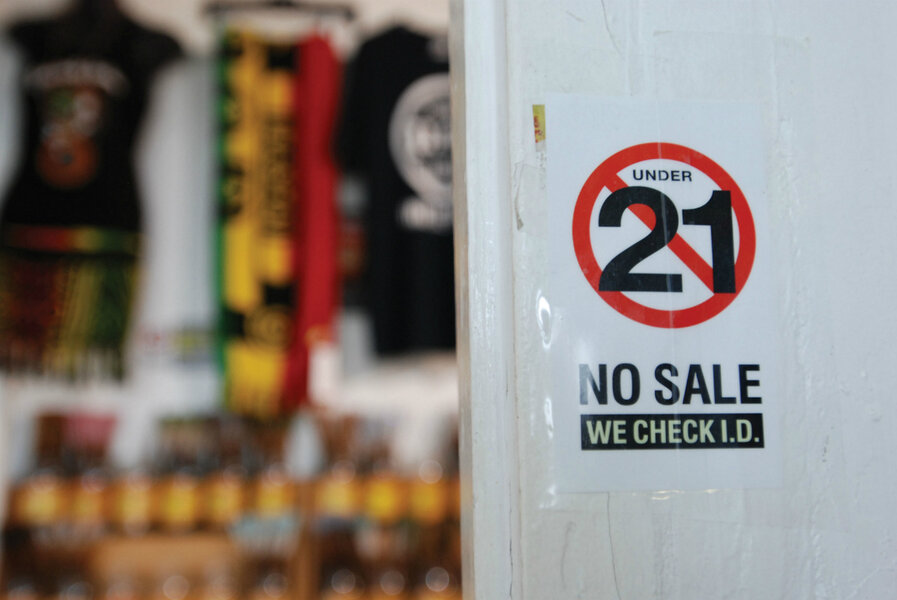Stopping US teens from smoking, one town at a time
Loading...
When the Greater Kansas City Chamber of Commerce was convening experts and community leaders around a health initiative, the idea of raising the smoking age from 18 to 21 kept coming up.
In fall 2015, the chamber declared that it would work to advocate for a higher smoking age throughout the region. Within a mere two weeks, legislators in both Kansas City, Mo., and Kansas City, Kan., passed ordinances in November 2015.
“The amount of interest and the momentum behind this idea surprised even us,” says Scott Hall, senior vice president for civic and community initiatives, in a phone interview. “We have exceeded our wildest dreams about how we would be able to collaborate with our local communities to make this happen.”
Why We Wrote This
When it comes to cutting down on teens smoking, activists found they can enact more change by going small. Instead of working at the national level, they’re focusing on small towns and cities – and seeing big results.
From there, the idea spread like wildfire. Today, some 28 communities in the greater Kansas City region have raised the smoking age to 21, and that number continues to grow, Mr. Hall says.
The scenario Hall describes is becoming more common across the United States, as towns, cities, and counties pass “Tobacco 21” laws banning the sale of tobacco products to those under the age of 21.
“We have now seen six states and over 350 municipalities adopting Tobacco 21 laws,” says John Schachter, director of state communications for the Campaign for Tobacco-Free Kids, in a phone interview. “We saw a lot of municipalities at the local level, especially in Massachusetts, start this trend.”
According to data from Mr. Schachter’s organization, the policy shift has taken place in communities ranging from large cities like Boston, Chicago, and New York to small towns with populations in the thousands or even hundreds. And he sees the legislation as key to addressing tobacco use among young adults.
“Since tobacco is so harmful, we should do everything we can to prevent tobacco use, especially among young people,” he says, noting research findings that some 95 percent of adult smokers started before age 21. “Increasing the legal age of sale to age 21 will surely help.”
Rob Crane, a family doctor and professor of family medicine at The Ohio State University, is founder and president of the Preventing Tobacco Addiction Foundation and Tobacco 21. Mr. Crane recalls his organization assisting with several failed state-level efforts to raise the smoking age.
The tide changed in 2005, he says, when the town of Needham, Mass., successfully passed Tobacco 21 legislation.
“We all realized that working locally was the secret sauce,” says Crane in an email interview. “There are no tobacco lobbyists at the local level, just parents, doctors, teachers and neighbors serving on local city councils.”
Both Crane and Schachter agree that success at the local level has fueled movement at the state level.
“Once we achieve enough local ordinances, there is then pressure in the state legislature to act,” says Crane, who predicts that by fall 2019, some 40 percent of the country will be blanketed with Tobacco 21 policies.
This growing momentum behind Tobacco 21 legislation at the local level comes as the US Food and Drug Administration is mounting an expansive campaign of enforcement around the marketing and selling of e-cigarettes to teenagers, an issue of concern for public health officials as the popularity of vaping grows in that age category.
Jonathan Winickoff, a practicing general pediatrician and professor at MassGeneral Hospital for Children, focuses his research on strategies to address tobacco use.
“Taking local action in your community is definitely the way to get things moving in your home state ... [and] it is good to keep in mind that the majority of all political parties, age groups, and even smokers themselves support these laws,” says Dr. Winickoff in an email interview. “All these successes have occurred in just the past five years, so the momentum is ... continuing to build.”
Hall says that having data about a reduction in tobacco use among youth in Needham after legislation was passed there helped fuel a snowball effect with other communities.
“Other cities began to realize the incredible impact that this could have,” he says. “We were able to articulate to our members – and to our partners in the various municipalities and counties around our metro – that if you did this, it would really work.”





